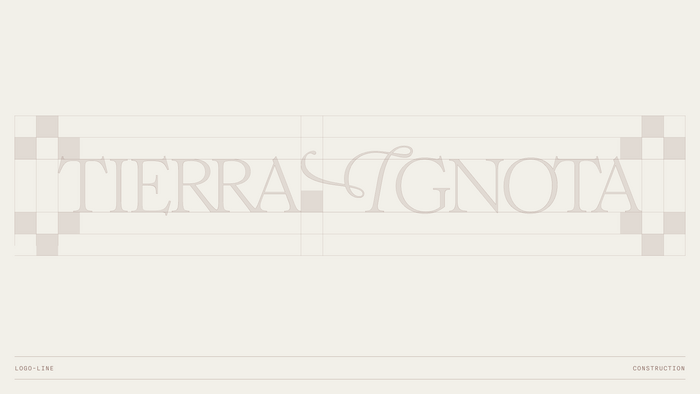Tierra Ignota

Source: relajaelcoco.com License: All Rights Reserved.



Tierra Ignota organizes immersive expeditions to remote locations. In less than a year, it has become one of the key references in its sector. What’s surprising is that from day one, they already had the hardest part: a clear narrative, a defined ethos, an active community, and a powerful visual archive.
The art direction was guided by a very clear principle: don’t compete with the content. Tierra Ignota already had a strong visual and narrative presence. What it needed was a framework, not a stage set.
Within that delicate balance – finding a visual language that felt distinct but didn’t compete, that wasn’t overly minimal or too trendy – typography played a key role. It gave warmth and clarity to the brand without adding noise or relying on decorative tricks.
We combined three typefaces to build this structure. Romie, by Margot Lévêque, brings subtle warmth and a reference to editorial design that supports the project’s narrative voice. Neue Montreal, by Pangram Pangram, provides visual clarity, structure, and a rational foundation that balances Romie’s softness. And to add a technical layer, Nitti, the monospaced typeface by Bold Monday, brings in visual cues from mapping and field note systems. Its 19th-century grotesque heritage introduces a different texture, activating a secondary voice without disrupting the overall cohesion.
We consciously distanced the design from the usual codes of the sector – no NGO greens, no lofty templates, no “ethnic” elements, no handwritten type – and moved toward a set of references that felt more editorial, documentary, and technical. The inspiration wasn’t a travel portal, but a field desk: a place to lay out maps, photos, notes, and records, not in rigid order, but with inner logic.
The color palette followed that same principle. We avoided sterile whites and harsh blacks to prevent unnecessary contrast, letting the photography, the true protagonist on the page, breathe and rise above the brand.
The result is a living visual system, capable of holding the story without interfering. A clear, flexible framework that doesn’t need to be rebuilt with every update – just unfold, like the project it supports.

Source: relajaelcoco.com License: All Rights Reserved.

Source: relajaelcoco.com License: All Rights Reserved.

Source: relajaelcoco.com License: All Rights Reserved.

Source: relajaelcoco.com License: All Rights Reserved.

Source: relajaelcoco.com License: All Rights Reserved.

Source: relajaelcoco.com License: All Rights Reserved.

Source: relajaelcoco.com License: All Rights Reserved.

Source: relajaelcoco.com License: All Rights Reserved.

Source: relajaelcoco.com License: All Rights Reserved.
This post was originally published at Fonts In Use